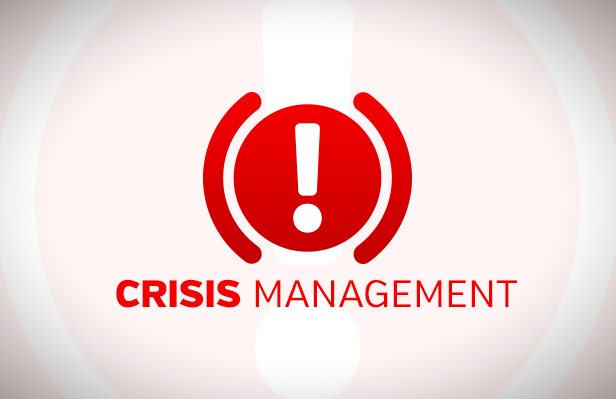Commentary

Crisis Management: PA’s Public Pension Problem
Note: This commentary appeared in the Sunday Pittsburgh Tribune-Review.
Crisis management can be broken down into three general phases: identifying the problem, developing the best plan to fix it, and executing that plan while adjusting as needed. It’s a simple framework that can be applied to the smallest or largest organizational problems. Without doubt, Pennsylvania taxpayers face a big one—a public pension crisis that ranks among the worst financial problems in the state’s history.
The problem: Pennsylvania’s two largest public pension plans (for state employees and public education employees) have unfunded liabilities of over $50 billion, and we’re all cosigners on this massive debt.
The pension crisis is not new; it has been in the making for years. For example, over the last six years alone, pension contributions by school districts (which share half of the pension burden with the state) rose by almost $2 billion—or more than $600 per homeowner. That’s enough to pay for approximately 30,000 additional teachers.
Worse still, projections indicate pension costs will jump over the next five years by another $1.7 billion, or $550 more per homeowner.
Needless to say, state and school budgets are feeling the pension pinch. The state’s Independent Fiscal Office estimates pension contributions will climb by 43 percent in the 2015-16 budget. That enormous rise in contributions for pensions exceeds the projected increase in state revenue, meaning there will be no increases in funding for other state functions or programs—or for tax relief. Even worse is that additional increases in state pension contributions will be required for several more years thereafter.
The crisis was created because defined benefit pensions are too easily manipulated by politics. This trend began in 2001 when, following robust stock market growth, lawmakers sharply increased pension benefits—both retroactively and prospectively—for themselves, judges, teachers, and other state workers. Incredibly, they reduced state contributions into the funds at the same time.
Recent attempts to grapple with the problem have essentially kicked the can down the road and the unfunded liability has grown. Indeed, the state’s failure to deal with the worsening unfunded pensions has already led to four credit rating downgrades in two years by multiple agencies.
So what can be done? Other states have had some success addressing similar pension problems. Most have created “defined contribution” plans for new hires—like 401(k)s—or dramatically changed defined benefit plans for new hires by raising the retirement age or lowering the payout.
These plans are good for employees as they are employee-owned and give workers flexibility as they change jobs more than ten times on average during their careers. And they are good for taxpayers because unfunded liabilities can no longer be foisted onto future generations of taxpayers.
Although a defined contribution plan is a necessary first step, it will not reduce the current $50 billion unfunded liability. Paying it off is straightforward, but very difficult. Policymakers will have to either reprioritize current spending with significant cuts in some programs or substantially raise taxes. There are really no other alternatives.
Unlike the private sector, promised retirement benefits for government employees are protected under current case law rulings and any attempt to reform earned benefits will most likely be challenged in court by government unions. Moreover, without major changes in the political environment it will be difficult to muster enough political support to enact significant changes.
Notwithstanding political reluctance, the most promising area for reforming benefits for current employees would be to guarantee full benefits earned to date but alter them going forward. Changes could be made to lower the salary base used to determine the pension payments. For example, overtime should not be counted toward the base, nor should “spiking” of salary during an employee’s last year add to their pension benefit.
Absent substantial reform, continuously rising pension payments will eat away at the state’s (and school districts) ability to fund other programs and services. The consequences could be job cuts and smaller (or non-existent) salary increases for state workers and school employees.
With state union contract negotiations coming up, this message of job losses and salary freezes must be sent by Governor Wolf to persuade union leaders to make concessions on reasonable changes to pension benefits.
Further, employees must be asked to contribute more to their own health care coverage—closer to what private sector employees are paying today. School boards must also use the reality of pension cost increases as bargaining leverage at contract time.
At the very least, Governor Wolf and the General Assembly must fully fund the current pension plans as well as implement a defined contribution plan for new state and school employees. This will be a measure of the seriousness they assign to this financial crisis.
John F. Kennedy famously said, “The Chinese use two brush strokes to write the word ‘crisis.’ One brush stroke stands for danger; the other for opportunity.” Ending the danger of one of the longest-running crises in Pennsylvania history should be viewed by Governor Wolf and the General Assembly not as a political hot potato, but as an opportunity to give our children and grandchildren a future unencumbered with massive state debt.
# # #
Matthew J. Brouillette is president of the Harrisburg-based Commonwealth Foundation and Jake Haulk is president of the Pittsburgh-based Allegheny Institute.